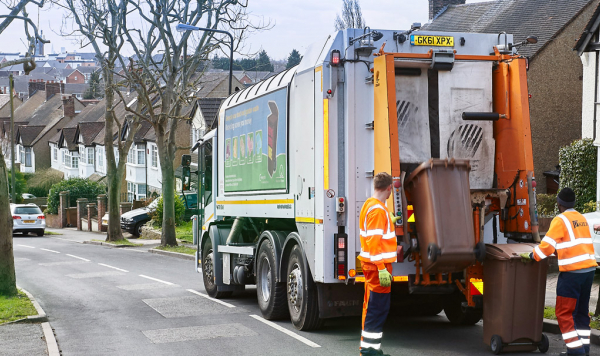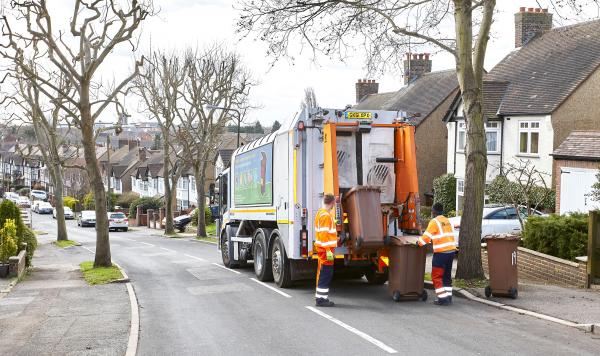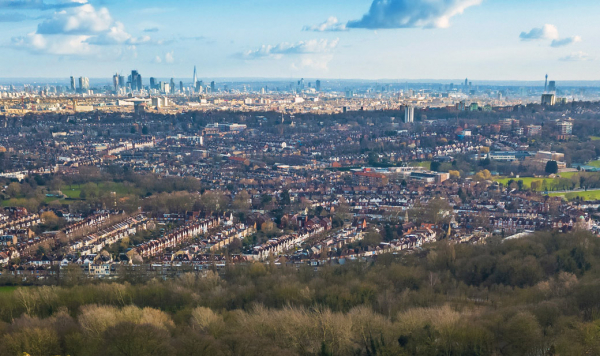Request
Dear Cheryl,
I would like to make a deputation at the NLWA AGM on the 24th June at 2:30pm. I would like to give the deputation in my personal capacity as an environmental engineer, local business owner and Enfield resident. I will make this deputation myself and am not making this application with any other person.
My deputation concerns the creation of persistent organic pollutants (POPs) by incinerators, the distribution of this POPs via incinerator plume emissions and the onwards transmission of these toxins via the sale of fly ash and bottom ash to the construction industry. Specifically I intend to raise the following points:
1. The Stockholm Convention provides international guidance on the safe management of persistent organic pollutants (POPs). The objective of the Convention is to minimise or prevent human exposure to POPs. It incorporates a precautionary and manufacturer/user pays approach. The Convention covers waste incineration because this is a source of POPs, including dioxin and furan compounds. The UK is a signatory to the Convention.
2. Newer waste incinerator technologies are claimed to run more cleanly and with less environmental impact. Nevertheless, pollutants are still produced.
3. Dioxins interfere with several biological processes that are key to embryonic and foetal development and are causally linked to poor birth outcomes. Dioxins, particulate matter and heavy metals, all emitted by incinerators, are known teratogens. A global metastudy published in 2020 titled "The health impacts of waste incineration: a systematic review" examining all international research on waste incinerators, found plausibility for a causal link between waste incinerators and congenital anomalies and miscarriage.
4. This study concludes that: "This systematic review highlights significant risks associated with waste incineration as a form of waste management. Many older incinerators were linked with neoplasia, reproductive issues and other diseases. While the results were not consistent across the literature, based on a precautionary principle there is insufficient evidence to conclude that any incinerator is safe. There is some suggestion that newer incinerator technologies with robust maintenance schedules may be less harmful, but diseases from exposures tend to manifest only after many years of cumulative exposure, so it is premature to conclude that these newer technologies improve safety."
Specifically it recommends that :
a. Since there has been insufficient time for health effects of newer technology to emerge, there must be a precautionary approach to licensing and monitoring incinerators.
b. As a condition of applying for a licence to build waste incinerators, independent, third-party conducted baseline population studies and long-term surveillance cohort studies be mandated to measure the longitudinal and emerging effects of incinerator's presence on the local community and the environment.
c. In countries that have ratified the Stockholm Convention, incinerators should be designed to meet the Convention guidelines.
5. My questions are:
a. What sampling and monitoring studies have been conducted in the vicinity of the Edmonton EcoPark to test for the presence of toxins associated with incineration (e.g. dioxins, furans and heavy metals)? If none, what evidence does NLWA have that its operations are free from health impacts?
b. What studies has London Borough of Enfield or NLWA conducted of local population health in regards the above concerns (see point 4b) to examine potential health effects of the existing incinerator?
c. In respect to the new planned incinerator, what conditions for public health monitoring and reporting have been placed on NLWA to secure a license to build and operate the new facility by any of the seven north London councils, especially LB Enfield within which it is sited?
d. Similarly, what conditions have been placed on NLWA by the Councils for sampling and monitoring in the locality for the presence of toxins?
e. What tests are conducted of the incinerator ash sold to the construction industry to ensure there is no presence of dioxins, furans or other harmful substances?
f. What studies are available regarding the safety of construction workers and building occupants handling products containing incinerator ash?
Finally, I am keen to hear responses to the above questions from the Enfield Council members of the board since they are my elected representatives.
Thank you for considering this application.
Kind regards
Georgia-Elliott Smith
Resident of xxxx
Response
14 July 2021
1b Berol House, 25 Ashley Road Tottenham Hale N17 9LJ
enquiries@nlwa.com
nlwa.gov.uk
Ms Georgia Elliott-Smith Via email
Dear Ms Elliott-Smith,
Thank you f or taking the time to raise your deputation to the North London Waste Authority (NLWA)
meeting on Thursday 24 June 2021.
I appreciate you bringing forward your views in relation to the North London Heat and Power Project
(NLHPP) and setting out the issues you wanted to draw to Members’ attention. The Authority Members
take seriously their responsibility to protect public services, public health, and the environment,
and these matters have been carefully considered in developing the NLHPP.
As promised in the meeting, I would like to take this opportunity to respond in writing and assure
you that all aspects of the NLHPP are thoroughly considered by the Authority and have been tested
and approved through an independent public inquiry process. This letter provides more detailed
information on the project in relation to the topics you have raised.
In your deputation you claimed that there is a plausible link between waste incinerators and
congenital anomalies, miscarriage and cancer, particularly in relation to dioxins and furans.
NLWA is committed to protecting public health, and for this reason is building the safest and
cleanest facility of its type in the UK.
The claim in your deputation is contradicted by Imperial College London, which in 2019 carried out
one of the most extensive studies ever undertaken into the health impacts of energy recovery
facilities (EfWs).
Imperial College London analysed all 22 EfWs in the UK, including the existing facility in
Edmonton. It analysed 1,025,064 births and 18,964 infant deaths.
The report concludes: “This large national study found no evidence for increased risk of a range of
birth outcomes, including birth weight, preterm delivery and infant mortality, in relation to
either MWI [municipal waste incinerator] emissions or living near an MWI operating to the current
EU waste incinerator regulations in Great Britain. The study should be generalisable to other MWIs
operating to similar regulations and with similar waste streams”.
The claim regarding cancer is contradicted by the UK’s Institute of Occupational Medicine which in
2020 carried out an extensive literature review of studies into EfW health impacts. Based on this
weight of evidence, the report concluded: “Earlier studies did not find convincing evidence of an
association of proximity to older municipal waste incinerators in Great Britain with cancer.
Although there is limited evidence of an association of proximity to older incinerators, or
exposure to dioxins, with sarcoma and lymphoma risk in other countries, the very substantial
decrease in dioxin emissions from EfW/MSWIs over recent years is likely to make these risks
negligible for populations currently living in the vicinity of modern, well controlled plants in
the UK. It is important to point out that stack emissions from modern MSWIs are much reduced compared to old generation plants”.
In your deputation you asked what sampling and monitoring studies have been carried out – by NLWA
or Enfield Council – in the vicinity of Edmonton EcoPark in relation to dioxins, furans and heavy
metals. You asked if the new Energy Recovery Facility will produce these pollutants and what
requirements are in place to monitor them.
The NLHPP carried out an extensive air quality analysis and produced a Health Impact Assessment as
part of the Development Consent Order process. They are available online here and here
respectively. The Air Quality Impact Assessment considered all the relevant emissions related to
the energy recovery process. This includes oxides of nitrogen; carbon monoxide; volatile organic
carbons; sulphur dioxide; particulate matter and fine particulate matter; hydrogen fluoride and
hydrogen chloride; ammonia; dioxins and furans; trace metals (lead, arsenic, cadmium and nickel);
and benzo(a)pyrene.
The study modelled the ‘worst case scenarios’ of emissions from the facility. In reality we expect
levels to be much lower. This published analysis shows categorically that no concentrations of
pollutants from the facility will breach any air quality or public health standards. The facility
will operate under an Environmental Permit, in accordance with the stringent public health
standards set by the Environment Agency.
In your deputation you asked what evidence the NLWA has that its operations are free from health
impacts.
NLWA’s first priority is protecting the health of its residents. The comprehensive air quality
analysis that was undertaken for the NLHPP is referenced above. This was reviewed and accepted by
the independent Planning Inspectorate, which recommended that the Government approve the project.
This specific study for the NLHPP is supported by Public Health England’s position, which is that
modern well run and regulated EfWs make a very small contribution to local concentrations of air
pollution and are not a significant risk to public health.
The emissions control technology fitted to the plant will be so efficient that, for the majority of
the year, local concentrations of particulates and NOx are expected to be effectively zero, and
only 2% of air quality limits for a few hours a year. This is vastly outweighed by other sources
including road traffic and domestic wood burning. In Enfield, road transport is responsible for
around 40% of NOx and 30% of particulates. Across London, road transport causes 60% of nitrogen
oxides and 25% of particulates. These figures are from the GLA’s London Atmospheric Emissions
Inventory.
In your deputation you asked how NLWA and boroughs are applying the ‘precautionary principle’.
Thank you for speaking about the precautionary principle during the meeting. This approach
requires careful analysis of new technologies before they are implemented. Energy recovery is a
proven technology, used globally to combat greenhouse gas emissions from landfill and manage
residual waste saf ely and efficiently. For the NLHPP specifically, NLWA undertook a full
Environmental Statement for the project, which entailed 2,000 pages of careful analysis of a range
of environmental, social and technological factors. This Statement was subject to an Examination in
Public and recommended for approval by the Planning Inspectorate. The Government followed this
recommendation in 2017 and the NLHPP is being built in line with the Development Consent Order.
In your deputation you suggested that there are growing scientific concerns with the project.
As referenced earlier in this letter, Public Health England is clear that modern facilities like
ours make a very small contribution to local concentrations of pollution and are not a significant
risk to public health. This position follows the clear scientific consensus, which includes
extensive academic studies by Imperial College London.
With regard to climate change, the clear scientific consensus is that methane, of which landfill is
a significant source, is a key obstacle to Net Zero. This is acknowledged by the Intergovernmental
Panel on Climate Change and the UK’s Climate Change Committee. In addition, the United Nations (UN)
Climate and Clean Air Coalition published in May 2021 a report which stated: “reducing human-
caused methane emissions is one of the most cost effective strategies to rapidly reduce the rate of
warming and contribute significantly to global efforts to limit temperature rise to 1.5 degrees”.
To reduce methane in the waste sector, the UN proposes a set of measures: “source separation with
recycling/reuse; no landfill of organic waste; treatment with energy recovery or collection and
flaring of landfill gas”. This approach is entirely in keeping with the NLHPP and NLWA’s overall
strategy to manage waste in an environmentally responsible way.
In June 2021, the Climate Change Committee stated: “Waste emissions fell by 28% from 2009 to 2019,
but this was primarily due to the landfill tax diverting biodegradable waste away from landfill to
other waste treatment, particularly Energy from Waste (EfW) incineration.” Moreover, the Sixth
Carbon Budget is clear that energy from waste, allied with carbon capture and storage by 2050, is
the principal route for residual waste disposal during the Net Zero transition.
NLWA is proud that the NLHPP aligns with international, national, regional and local policies to
tackle the Climate Emergency and protect public health.
If you have any further questions about the Project or require any clarifications, I would be happy
to answer them. You may also find useful the extensive Frequently Asked Questions on our project
website, which cover the themes you raised in your deputation. I would like to thank you again for
your interest in the NLHPP and for submitting your deputation last month.
Yours sincerely,
Cllr Clyde Loakes
Chair, North London Waste Authority




